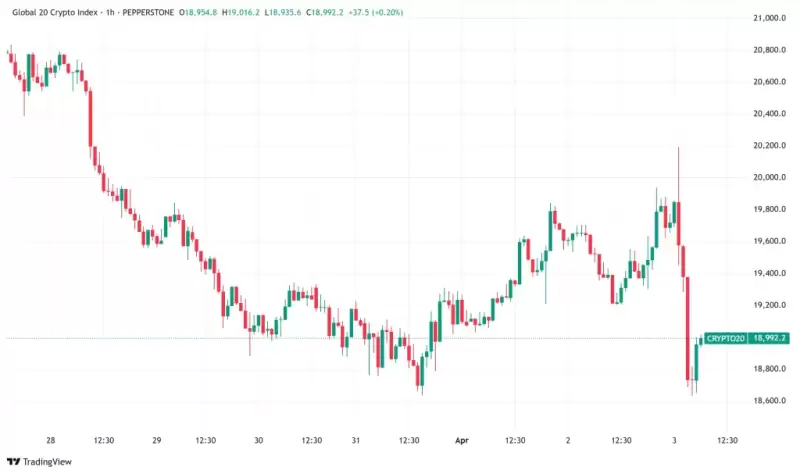 |
|
 |
|
 |
|
 |
|
 |
|
 |
|
 |
|
 |
|
 |
|
 |
|
 |
|
 |
|
 |
|
 |
|
 |
|
Trugard Labs has revealed a series of major threats plaguing blockchain networks, particularly in emerging and fast-growing chains like BASE

A series of major threats are plaguing blockchain networks, particularly in emerging and fast-growing chains like BASE, Coinbase’s Layer 2 solution. As Trugard Labs unveils their September findings from the Xcalibur source code detection suite, they highlight the latest scams exploiting users on the BASE, Ethereum, BSC, and Polygon networks.
The rise in politically themed meme coin scams, multi-chain vulnerabilities, and BASE’s appeal to scammers indicate a troubling pattern across decentralized finance (DeFi) networks.
As BASE gains popularity for its low fees, scalability, and backing by Coinbase, it’s attracting both legitimate users and bad actors. Much like the early days of Binance Smart Chain (BSC), BASE’s rapid growth has made it a hotspot for scams, thanks to its easy and affordable setup.
Trugard’s report warns that scammers are taking advantage of BASE’s low fees and simple token setup, making it easy for them to launch frequent, low-cost attacks. Scams range from classic “rug pulls” to politically themed meme coins, which are currently surging in popularity and exploiting investor interest during election season.
Trugard Labs identified five high-severity vulnerabilities frequently affecting multiple blockchain networks. The first vulnerability, Hidden Mint (Controlled Mint), involves manipulative contracts that allow unauthorized minting, inflating token supply and devaluing assets. This issue was particularly widespread on BSC, Base, and Ethereum, with each network experiencing hundreds of incidents.
The second vulnerability, Hidden Balance Update, lets scammers make unauthorized balance adjustments, exposing token holdings to hidden manipulation. This issue hit BSC and Base chains hard, pointing to a clear need for stronger balance update controls.
Another major risk, Malicious Boolean Checks; a smart contracts flaw that enables scammers to halt token transfers or approvals—was especially common on Ethereum, where unauthorized transactions create a heightened risk for token holders.
Another critical vulnerability, Digital Signature/Import Tampering, allows entities to control unapproved token burns, with Base showing the highest susceptibility. Malicious Burn Functions, allowing unchecked token destruction, also surfaced frequently on Ethereum, adding further concerns for investor security.
September 2024 saw a series of politically themed meme coin scams. Tokens like “Trump Vs Harris” and “Trump2024” aren’t just cashing in on political sentiment; they’re designed to generate quick profits for their creators, often leaving investors with worthless tokens.
Trugard Labs’ Xcalibur suite flagged these tokens for serious issues, such as hidden balance updates, reentrancy risks, and faulty transfer functions. These scams play on investors’ political or ideological leanings, creating a sense of urgency to buy in, only for scammers to pull out as prices rise.
Among the tokens flagged:
According to researchers, BASE is following a path similar to that of Binance Smart Chain (BSC) in its early days. With low fees and an easy setup, BSC became a lucrative target for cybercriminals pulling off rug pulls and pump-and-dump schemes.
BASE now faces similar problems, prompted by social media hype and anonymous developers launching unverified projects. Trugard’s report highlights the influx of cloned projects and meme coins on BASE—a tactic scammers use to mislead investors by copying branding from popular projects.
This increase in scams on BASE and other networks is a reputational threat to Web3 projects. It risks turning away new users and preventing credible developers. However, tools like Trugard Labs’ Xcalibur suite and others can help control these threats by providing early warning signs for malicious contracts.
In the meantime, users should exercise caution and apply common sense to protect against the growing number of scams, especially with new tokens promising quick returns. Trugard’s findings serve as a reminder that DeFi is not immune to cybersecurity threats, urging the blockchain community to prioritize security alongside growth in this vibrant space.
Disclaimer:info@kdj.com
The information provided is not trading advice. kdj.com does not assume any responsibility for any investments made based on the information provided in this article. Cryptocurrencies are highly volatile and it is highly recommended that you invest with caution after thorough research!
If you believe that the content used on this website infringes your copyright, please contact us immediately (info@kdj.com) and we will delete it promptly.
-

-

-

-

-

-

-

-

- Daily Crypto Signals: Bitcoin Tumbles from $88.5K, XRP Awaits Ripple Effects of New Trump Tariffs
- Apr 03, 2025 at 10:30 am
- The cryptocurrency market displayed a mixed landscape on April 2nd, 2025, as Bitcoin, Ethereum, XRP, and other altcoins grappled with the ripple effects of newly announced US tariffs
-




























































